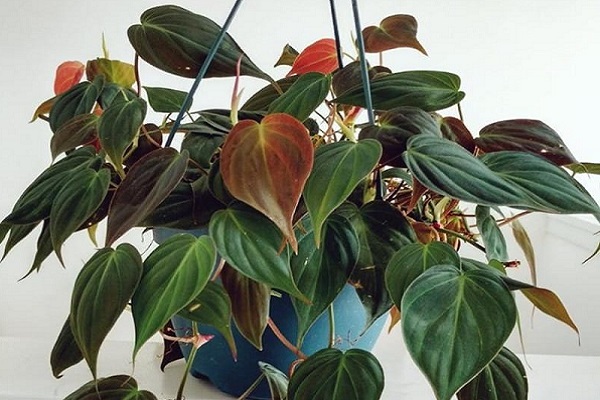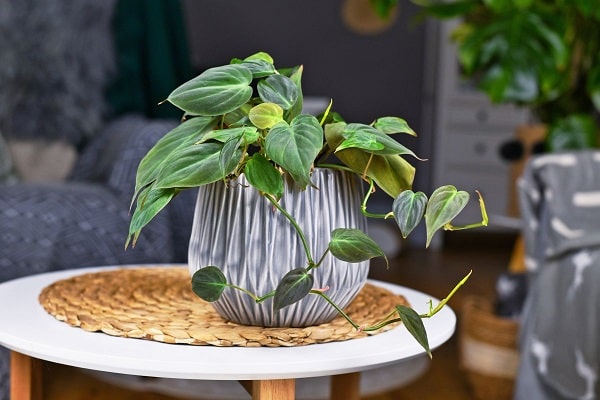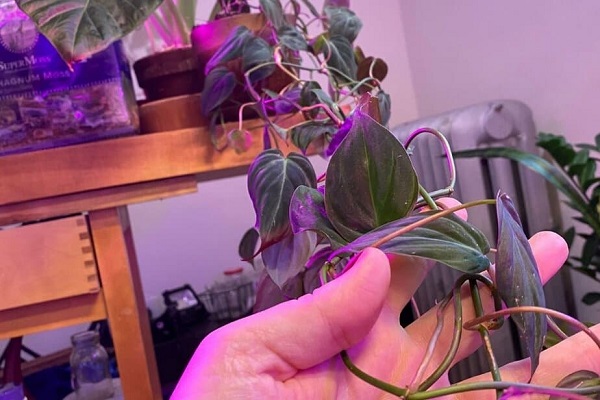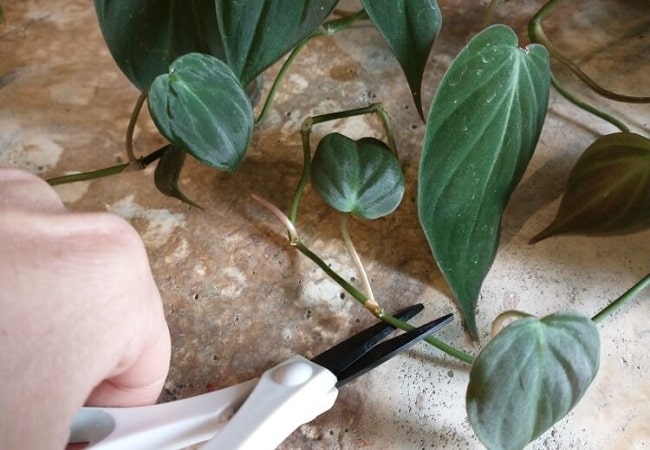Philodendron micans is a stunning tropical plant known for its heart-shaped velvety leaves and trailing vines. It belongs to the Araceae family and is native to Central and South America. How to propagate philodendron micans ? This popular houseplant, also referred to as Velvet Philodendron or Satin Pothos, has gained a considerable following among plant enthusiasts due to its unique foliage and easy-care nature.
Propagation plays a vital role in the journey of plant enthusiasts. It allows us to create new plants, expand our collection, and share the joy of gardening with others. In the case of Philodendron Mexicans, propagation is an excellent way to multiply your plant and cultivate more lush green beauty in your home or garden. This article will advice into the fascinating world of propagating Philodendron Micans, exploring various methods and providing helpful tips.
Quick Navigation
Understanding Philodendron Micans

Before we dive into propagation techniques, let’s take a closer look at Philodendron Micans and understand their characteristics. This evergreen vine features heart-shaped leaves with a velvety texture, showcasing shades of green and bronze, often with hints of reddish-brown. The foliage is delicately veined, adding to its visual appeal.
One of the significant benefits of propagating Philodendron Micans is the opportunity to share its beauty with others. Whether you want to gift a cutting to a friend or expand your collection, propagating this plant allows you to experience the joy of nurturing and growing new specimens.
Methods of Propagation
There are several effective methods for propagating Philodendron Micans. Each technique has its advantages and may yield different results. Let’s explore three popular ways: stem cuttings, air layering, and division.
Stem Cuttings
Stem cut is one of the standard and straightforward methods of propagating Philodendron Micans. Here’s how to do it:
Healthy Stem For Propagation
Look for a mature stem with several leaves and nodes. Ensure it is free from any signs of damage or disease.
Preparing The Cutting
Using a clean, sharp double of pruning shears, make a clean cut just below a node on the chosen stem. The cutting should be 4-6 inches long and include at least two nodes.
Rooting the cutting
Place the stem cutting in a glass of water or insert it directly into a well-draining potting mix. Keep the soil moist but not waterlogged. Alternatively, you can use a rooting hormone to encourage faster root development.
Caring
Place the cutting in a warm and humid location with indirect sunlight. Mist the leaves every day to maintain high humidity levels. Within a few weeks, you should start seeing roots forming.
Air Layering
Air layering is a more advanced technique that allows you to propagate Philodendron Micans while the plant is still attached to the parent plant. Here’s how to do it:
Preparing The Branch
Make a small 1-inch-long vertical cut in the middle of the selected branch, avoiding any existing nodes. Gently remove the bark and expose the inner stem.
Applying Rooting Hormone
You can apply a rooting hormone powder or gel to the exposed area to stimulate root development.
Wrapping The Branch
Take a handful of moist sphagnum moss and wrap it around the express section of the branch. Secure the moss with plastic wrap, ensuring it is snug but tight. This will create a moist and conducive environment for root formation.
Caring For The Air Layer
Keep the moss moist by misting it regularly or covering it with a plastic bag to retain moisture. Place the air layer in a warm and bright location, but avoid direct sunlight. After a few weeks to a few months, you should notice the development of roots within the moss.
Division
Dividing Philodendron Micans is an excellent method if you have an established plant with multiple stems or offshoots. Here’s how to do it:
Identifying suitable plants for division: Look for mature Philodendron Micans plants with multiple stems or growth clusters.
Preparing the plant for division: Gently remove the plant from its pot and carefully separate the root ball into individual sections, ensuring each has its own set of roots and foliage.
Separating the plant into sections: Use your hands or a clean, sharp knife to divide the root ball. Be cautious not to damage the roots or stems during this process.
Transplanting the divisions into new pots: Place each divided section into a pot filled with a well-draining potting mix. Provide proper care, including watering and light requirements, as the newly separated plants establish themselves.
Suitable Growing Conditions How To Propagate Philodendron Micans

Please make sure of the successful growth of Philodendron Micans; it’s crucial to provide suitable growing conditions. Consider the following factors:
Light requirements for Philodendron Micans: This plant thrives in bright, indirect light. Avoid exposing it to direct sunlight, as it can scorch the leaves. Place it near a window with filtered light or in a well-lit area indoors.
Temperature and humidity considerations: Philodendron Micans prefers average room temperatures between 65-80°F (18-27°C). It also appreciates higher humidity levels, so consider misting the leaves or placing a humidifier nearby.
Soil and watering needs: Use a well-draining potting mix that retains some moisture but doesn’t become waterlogged. Allow the top inch of soil to dry out between watering, and then water thoroughly, ensuring excess water drains away.
Fertilization and feeding guidelines: To promote healthy growth, feed your Philodendron Micans with a balanced, water-soluble fertilizer during the growing season (spring and summer). Follow the instruction on the fertilizer package for the correct dosage and frequency.
Care and Maintenance Tips

To keep your propagated Philodendron Micans thriving, follow these care and maintenance tips:
Providing Proper Support
Philodendron micans is a vining plant that appreciates support for upward growth. Provide a trellis, moss pole, or other support structure for the plant to climb and spread its beautiful foliage.
Pruning And Shaping The Plant
Regular pruning helps decorate the desired shape and size of your Philodendron Micans. Trim any leggy or overgrown stems to encourage bushier growth and remove any yellowing or damaged leaves.
Pest And Disease Management
Look for common houseplant pests like spider mites, mealybugs, and scale insects. If you notice any infestations, treat them promptly using organic or chemical methods. Additionally, ensure good air circulation and avoid overwatering to prevent fungal diseases.
Regular Monitoring And Maintenance Practices
Regularly inspect your plant for signs of stress, like wilting, yellowing leaves, or stunted growth. Adjust watering, lighting, or humidity levels accordingly. Dust the leaves periodically to keep them clean and dust-free, hindering their photosynthesis ability.
Troubleshooting Common Issues
Even with proper care, Philodendron Micans may encounter some common issues. Here’s how to troubleshoot them:
Yellowing Or Browning Leaves
Yellowing or browning leaves may indicate overwatering, underwatering, or nutrient deficiencies. Adjust your watering routine, ensuring that you’re neither drowning nor dehydrating the plant. Consider fertilizing with a balanced houseplant fertilizer to provide essential nutrients.
Overwatering Or Underwatering Problems
Overwatering can be led to root rot and other fungal diseases. Ensure the soil is well-draining and allow the top inch to dry before watering again. Underwatering, on the other hand, can cause wilting and dryness. Adjust your watering schedule accordingly, considering the plant’s specific needs.
Root Rot And Fungal Diseases
Overwatering, poor drainage, or high humidity levels can contribute to root rot and fungal diseases. To prevent these issues, ensure proper drainage, avoid waterlogging the soil, and maintain good air circulation. If root rot occurs, remove affected roots, repot the plant in fresh soil, and adjust your watering practices.
Nutrient Deficiencies And Excesses
Nutrient deficiencies can manifest as yellowing leaves, stunted growth, or poor foliage colour. Use a balanced fertilizer to provide essential nutrients in appropriate amounts. Be cautious not to over-fertilize, as excessive fertilizer can cause fertilizer burn or salt buildup. Follow the instructions on the fertilizer and packaging for proper application.
FAQs
How Long Does It Take To Propagate Philodendron Micans?
Propagation of Philodendron Micans can take some time, and the duration can vary depending on the method used and environmental conditions.
Stem cuttings: When propagating Philodendron Micans through stem cuttings, it typically takes around 4-8 weeks for the cuttings to develop roots and establish themselves as independent plants. However, it’s crucial to note that individual results may vary, and it’s best to be patient and monitor the progress of the cuttings.
Air layering: Air layering is a slower propagation method than stem cuttings. It can take several months for the roots to develop and the air layer to be ready for separation from the parent plant. This method requires patience and consistent care.
Is It Better To Propagate Philodendrons In Soil Or Water?
When choosing between soil or water for propagating Philodendron Micans, it is generally better to reproduce them in soil for long-term success and healthier root development. While you can temporarily root the cuttings in water, transferring them to the ground is recommended once the roots have developed.
Philodendron Micans can tolerate growing in water temporarily, but it’s not ideal for long-term growth. Water propagation may result in weaker root systems and make it more challenging for the plant to transition to the soil.
Can You Grow Micans In Water?
Micans plants generally prefer bright, indirect light rather than total sun exposure. Direct sunlight can scorch the leaves and cause damage. It’s best to place your Micans in a location with filtered or indirect light, like near a window with a sheer curtain or in a well-lit indoor area.
Can Mexicans Tolerate Full Sun?
The best soil for Philodendron micans is a well-draining potting mix. A mixture that includes components like peat moss, perlite, and vermiculite works well to provide adequate drainage while retaining some moisture. Adding organic matter, such as compost or coco coir, can also contribute to the overall health and nutrition of the plant. Aim for a solid mixture that is loose, well-aerated, and rich in organic matter.
What Is The Best Soil For Micans?
The propagation process for Philodendron Micans can take a few weeks to several months, depending on the method used. Soil propagation is generally recommended for long-term growth, while water propagation can be used temporarily. Micans plants prefer bright, indirect light and a well-draining potting mix with good moisture retention and organic matter.
Conclusion
Propagation opens up a world of possibilities for plant enthusiasts, and Philodendron Micans is an excellent candidate for this rewarding process. By utilizing methods such as stem cuttings, air layering, or division, you can multiply your Philodendron Micans collection and share the beauty of this stunning plant with others.

My name is Md Deloar Hossain and I’m the creator of Club Gardening, designed for all your gardening ideas, gardening product reviews, and a place to help you find the best gardening experience possible.


